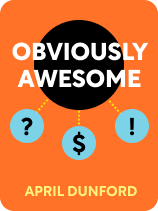

This article is an excerpt from the Shortform book guide to "Obviously Awesome" by April Dunford. Shortform has the world's best summaries and analyses of books you should be reading.
Like this article? Sign up for a free trial here.
What makes your product unique? How is it different and better than the alternatives?
Without proper positioning, customers can’t understand why they should bother to buy your product. In Obviously Awesome, April Dunford presents a 12-step positioning process. Step 5 is to identify what makes your product stand out from—and above—the alternatives.
Let’s take a closer look at this step.
Your Product’s Superior Features
A vital part of the product positioning process is to identify what features make your product different and better than those alternatives, advises Dunford. How do you determine what makes your product unique? List all of the concrete, unique features of your product. Approach your product from a few different perspectives to ensure you’re pinpointing all possible assets. For instance, your vacuum’s suction power makes it great for carpets, but its light weight also makes it great for vacuuming stairs. You might consider asking ideal customers why they chose you and what they feel sets you apart from others.
(Shortform note: Dunford presses your team to consider several customer perspectives on your product rather than just your own. Tony Robbins’s advice on perspective-taking in relationships might help your team more easily adopt these viewpoints. Have your team ask themselves three questions: 1) What is the customer seeing in this product that I’m not seeing? 2) What past experiences have led the customer to feel this way about the product? 3) How can I use this information to better understand the customer? For instance, customers may have had past experiences with poorly performing vacuums, so you can use that information to list your superior suction power as a feature of your vacuum.)
When listing your product’s assets, stick to concrete, verifiable features rather than vague, unverifiable ones, like “user-friendly” or “increases productivity,” recommends Dunford. However, if an independent reviewer writes that your product does these vague things—that your product is more user-friendly than alternatives, for instance—that counts as a concrete and verifiable feature.
(Shortform note: If independent reviewers aren’t reviewing your product, you might boost your product’s visibility by encouraging customers to review your product first. You can do this by simply asking the customer outright to leave a review and then by incorporating review solicitation into your selling process, so it happens automatically. When customers review your product, you increase your chances of being found online—and ideally, being reviewed by an industry publication that can verify your product’s quality and assets.)

———End of Preview———
Like what you just read? Read the rest of the world's best book summary and analysis of April Dunford's "Obviously Awesome" at Shortform.
Here's what you'll find in our full Obviously Awesome summary:
- What "positioning" is and why it's so important for marketing
- Three common (and avoidable) mistakes marketers make
- A 12-step process that lets you position any product well






